 Hi Everyone,
Hi Everyone,
NOTES:
* I’ve been trying to learn a little about some natural medicines, and today I did a weed walk-through of my yard to show you two plants that have healing properties.
This lovely weed is called plantain. You can recognize it from its broad leaves and how all the veins come together at the bottom of the leaf. It is great for healing. In fact, if you get a scrape, or cut, or insect bite outside at a T-Ball game, and you can find some of this in the grass, you can tear off a leaf, chew it up (yeah, it tastes like grass), and put it on the affected area. It will take the sting and pain away and promote healing. Check this out: Plantain Weed: Benefits, Side Effects, and Uses
 |
 |
 |
When I find it on the lawn, I pick the leaves and bring them in and dry them (I do it in the dehydrator). Then I can use them to make salves or tinctures. Sounds fancy, huh?
Here is the other weed I have lots of:
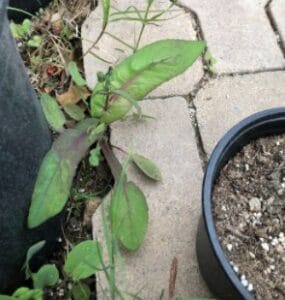 |
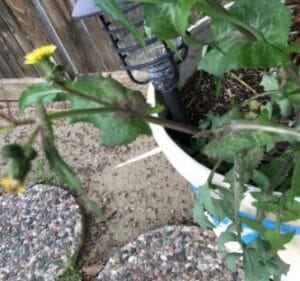 |
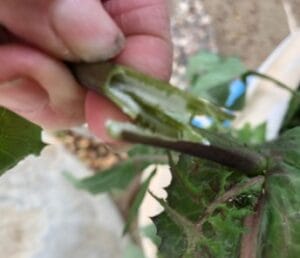 |
When I was a kid, I always called it milkweed, because the stems have that sticky white stuff. It is actually called wild lettuce. Wild lettuce as food and pain relief: how to identify it in your garden.
— Wild Plants, Foraging, Food, Art and Culture
Here is a quote from this article:
The milky sap contains lactucarium, which has been used as medicine since antiquity for its digestive, diuretic, narcotic, and sedative properties. Lactucarium is known as ‘poor man’s opium’ I always have some dry wild lettuce leaves in my dispensary, which I brew when needed. It is important not to boil the leaves, as very high heat will destroy the beneficial effects, so just place a few leaves in a teapot, add hot water and let it infuse for a few minutes.
LONG TERM FOCUS: Beans
1 lb dry packaged beans = 2 c. dry beans = 6 c. cooked beans
Beans are part of the “legume” family. The more you have of different types of grains, the broader spectrum of nutrients you will get.
There are 3 different types of grains:
cereals: barley, oats, rice, rye, wheat, corn
pseudo-cereals: amaranth, quinoa, chia
legumes: alfalfa, peas, beans, lentils, peanuts
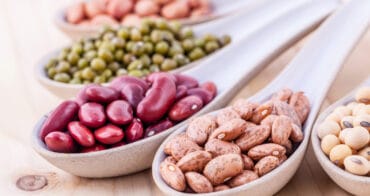 “During the Great Depression, beans were also known as “poor man’s meat” because of their protein. They are a rich source of niacin, thiamin, riboflavin, B6, carbohydrates, minerals, vitamins, and fiber. They have good cancer-fighting characteristics and have been specifically linked to lowering the risk of colon cancer.
“During the Great Depression, beans were also known as “poor man’s meat” because of their protein. They are a rich source of niacin, thiamin, riboflavin, B6, carbohydrates, minerals, vitamins, and fiber. They have good cancer-fighting characteristics and have been specifically linked to lowering the risk of colon cancer.
Consider storing “some” of the following: black beans, black-eyed peas, garbanzo beans, lima beans (NOT my favorite), great northern beans, split green or yellow peas, kidney beans, lentils, navy beans, pinto beans. There are still other varieties worth exploring.
There are three main ways to cook beans
- Overnight soak – just what it says. The longer you soak them, the less gassy the beans will be. After 12 hours, drain the water, rinse and cook. Beans soaked for 12 hours have a more uniform shape than quick soaked beans.
- Quick soak: Boil for 1 hour, turn off the heat, and soak for 2-3 hours. Drain the water and cook.
- Just boil away. Eventually, they will soften and cook up.
AFTER your beans are cooked, add flavorings, meat, vegetables, or whatever. Don’t add these ingredients while the beans are cooking. Some acidic foods will increase the beans’ cooking time: tomatoes, lemon juice, vinegar, etc.
Cooked beans will store nicely in your refrigerator for a week and they will freeze nicely for at least 6 months.
The recommended amount is 2 1/2 pounds per person per month (30 pounds a year). That doesn’t sound like very much. But 1 lb = 6 cups beans; 2 1/2 pounds = 15 c. beans = 1/2 c. beans per day. A starvation diet to be sure. Just plan accordingly.
SHORT TERM FOCUS: Tomato Sauce
I do NOT can my own tomato sauce. I just buy a flat at a time and keep 2-3 flats on hand. I DO can my own diced tomatoes. I like them better than canned because I don’t get any “core” pieces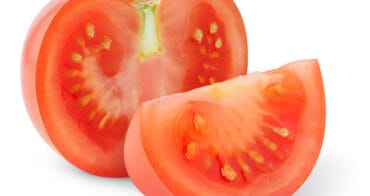 that are hard, white, and bitter. I try to wait until prices are under $.50 per pound, and even then it is hardly worth it, except for my finicky preferences. I’m hoping that this year’s garden, with 10-12 plants of determinate tomatoes, will give me a good harvest that I can “can”.
that are hard, white, and bitter. I try to wait until prices are under $.50 per pound, and even then it is hardly worth it, except for my finicky preferences. I’m hoping that this year’s garden, with 10-12 plants of determinate tomatoes, will give me a good harvest that I can “can”.
72-HOUR KIT FOCUS: Emergency Contacts
Time to update your emergency list. Other than your phone, this list should be kept someplace where people can get a hold of it if you have an accident. Your emergency backpack should have a list of numbers and addresses. I’m thinking that I’ll take a satellite photo of each person’s address in case I have to drive there without the aid of my GPS. I can simply keep the papers in an envelope tucked into my backpack.
MISC FOCUS: Bathroom Tissue, AKA Toilet Paper
 Time to store another package. I like the Costco brand which has 30 rolls in a pack. Keep it in the garage, or in the tool shed, or anyplace where it will be dry. We ALL know what it’s like to go to the store and NOT have toilet paper. One roll per person per week.
Time to store another package. I like the Costco brand which has 30 rolls in a pack. Keep it in the garage, or in the tool shed, or anyplace where it will be dry. We ALL know what it’s like to go to the store and NOT have toilet paper. One roll per person per week.
FOOD STORAGE RECIPES
I’ve shared this one before, but it’s one of my fav’s and I make it all the time. I like it because the ingredients are all shelf-stable, but you can use fresh if you want to. Plus, it uses two types of beans not usually stored: Northern white beans and garbanzo beans. You can get both of these types of beans in dry form, or in cans.
White Chili
2 chicken breasts – cut in small cubes
1 TB oil – fry chicken in oil
1 onion chopped – and and sauté
3 cloves garlic, chopped – add and simmer 1-2 min. more
1 tsp cumin
You CAN use canned chicken and dehydrated vegetables. Rehydrate the onion and garlic in some hot water for 10-15 min. Then sauté in the oil. Add the cooked chicken (drained) and cumin. Stir to mix and heat through.
Add:
3 cans Northern white beans not drained
1 can garbanzo beans not drained
1 can white corn drained
1 can chopped green chiles (I’m not a big fan of chiles, but they add a nice flavor and you really can’t taste them. It does NOT make the chili spicy.)
2 tsp chicken bouillon.
Simmer 1 1/2 hours (or make in the crockpot)
Top with jack cheese. (which I usually forget). This chili goes well with cornbread, biscuits, muffins, or any type of bread.
Red Beans and Rice
from The Pioneer Cookbook by Miriam Barton
1 pound dried kidney beans. Rinse the beans.
8 c. water
ham bone or ham hocks are optional but really good.
1 onion diced (can use dehydrated)
2 celery stalks, sliced (can use dehydrated)
1 green or red pepper (stem and seeds removed) diced
2 cloves garlic minced (can use dehydrated)
1 1/2 tsp salt
Place all ingredients in a large stockpot. Cover and cook on medium heat for 3-4 hours, stirring occasionally.
1 1/2 c. rice – Stir into the pot for the last 40 minutes of cooking. It may be necessary to add more water if it cooks out before the rice is soft.
The beans and rice are done when they are tender. Remove the ham bone before serving.
Two Chickpea Recipes
Roasted Garbanzo Beans
2 cans of garbanzo beans, rinsed and drained. Pour on a cookie sheet and pat dry.
2 TB olive oil – Toss with beans
1 tsp salt – Sprinkle and continue tossing till well mixed
Bake 40-50 minutes until crisp. Tossing and turning pan halfway through cooking.
Season with your preferred mix of seasoning when they are finished baking:
Cajun, garlic, onion, cumin, chili powder, etc.
Roasted Cinnamon Garbanzo Beans
1 can chickpeas (garbanzo beans) rinsed, drained, and patted dry (or about 2 cups cooked and dried)
1 tsp canola or coconut oil
1 tsp cinnamon
1 TB maple syrup or honey
1/2 tsp vanilla extract
1/2 tsp salt
Mix all ingredients in a medium bowl. Spread on a baking sheet or baking dish and bake at
325˚ for 12-15 minutes. Serve warm or at room temperature, smashing beans slightly for younger eaters if desired.
Marti

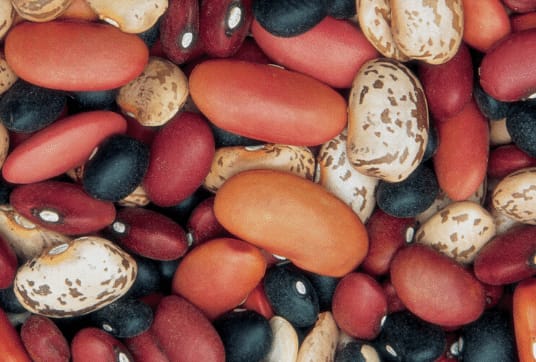
Really enjoy your added content. Viewing on my phone, so pictures of your medicinal herbs was not identifiable, can you suggest any good books on the subject? Thanks
Hi Marti, Please put a note in to make sure people find out if a field has been sprayed for pesticides before taking any plantain & chewing it for insect bites.
Hi Marti,. Will you be able to add nutrition information to recipes in the future? I worry about getting a balanced diet for my family if we’re ever in a grid down situation. Thanks for the recipes, they sound great!
Hi Marti. I have been dehydrating beets as they have been helpful in keeping my blood pressure down. I also dehydrate other root vegetables as well.
I have also heard about the plantain. It seems to grow everywhere. That is a good resource for all.